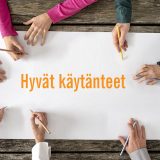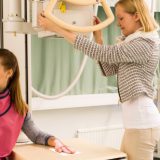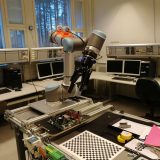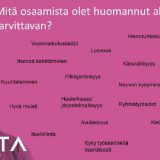A poster of business models in a scientific conference turned into an online display – a new normal?
Business models interest not only business people but also geoscientists. That we could experience as we participated in an online conference, EGU Assembly 2020 in May. Due to coronavirus this traditional conference in Vienna moved online. A scientific poster was changed to display online, and discussed via a live text-based chat. Will this be a new normal in the future to get attention to our scientific research among peers?
Developing business models and services for the underground laboratories in the BSUIN project
We have been responsible for the service development and service design activities in the BSUIN project. The business models of the underground laboratories have been one of the focuses. The purpose of the project is to develop a service offering of Baltic Sea Region’s underground laboratories in order to utilize their facilities and research infrastructure for business development [1].
Based on this research we wrote a research paper on the challenges and opportunities when developing business models for the underground laboratories and their network. Business model describes the logic of how a company intends to make money. It describes the rationale of how a company creates, delivers and captures value. [2]
Service Design was used as an approach in the project. Data was gathered by facilitating Service Design workshops and analyzed by qualitative methods. These main principles need to be considered throughout the service design process: exploration, creation, reflection and implementation stages [3], [4]. We have discussed service design in our previous paper [5]. During the project 13 workshops related to different stages were organized in Finland, Sweden, Germany, Poland and in Russia either face-to-face or online. The research process with three stages is described in the figure 1.
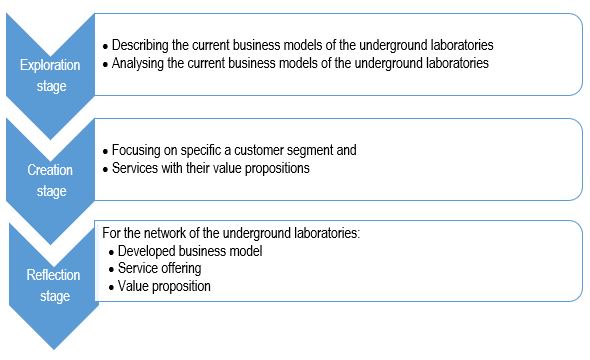
FIGURE 1. The research process with three stages
Results in brief
In the Exploration workshops the business models of the underground laboratories were described and analyzed. We found that paying customer segments are few in number, and fixed costs are significant. Each underground laboratory is unique having specific know-how, expertise and infrastructure.
In the Creation workshops the focus was on specific customer segments and services and their value propositions. The outcomes of the workshops were promising and recommendations were made. They should look for new customer segments and create new services and value propositions. In addition, they should create and describe business models for the chosen customer segments and services.
In the Reflection workshops business models for the network were developed. The focus was particularly on core, supporting and additional services.The essential services are research infrastructure, underground infrastructure, site characterization and wide expertise for underground projects. A generic business model for the network was described based on the data, results, analyses and feedback of all the previous workshops.
EGU 2020 conference – this year online!
The European Geosciences Union (EGU) is the leading organisation for Earth, planetary and space science research in Europe, vision of which is to realise a sustainable and just future for humanity and for the planet. It is a non-profit international union of scientists with about 20,000 members from all over the world. [6]
BSUIN project made it possible for us to introduce business models in the conference as a specific session was granted for underground labs – ”Multidiciplinary Underground Laboratories and Test Sites – what makes them tick?” Even though every underground laboratory has a unique infrastructure and set of activities, common operators, challenges and possibilities can also be identified. [7]
EGU2020 in Vienna this year turned into an online conference (picture 1). Our accepted abstract and poster changed into display [8] [9]. We created the content for the scientific poster to be published, and luckily, we found a student who wanted to make infographics and posters.

PICTURE 1. Abstract and poster in online conferense
Graphic design of the display
Instead of a traditional power point presentation we wanted a more dynamic, illustrative and visual presentation as a display. We had planned the content of the display. But very soon we realized that we need a graphic designer to get our message through. We recruited an experienced student of the degree programme in business information technology, who could include this assignment as part of his project studies.
In this case, a still graphic was chosen and Adobe Illustrator CC 2020 was used as a program. User-friendliness is important. For clear, large text, and more space for imagery keeps people engaged as they read through. The ideas for graphics came by free association upon reading the content, and the five main headings helped to split the content. Besides the layout, attention was payed to consistency (e.g. justified texts, curved lines, gradient backgrounds), harmonious colors, and complementary fonts.
The display consists of five parts and it is presented and described briefly in pictures 2–6 below.
Summary and conclusions
It is challenging to develop business models for the underground laboratories because they have not been business oriented. Every one of them is unique and independent, and the expertise is related to underground sciences. Business orientation would offer them an opportunity to boost underground scientific research which is the key element in the business model. On top of these analyses it is possible to find out ways to innovate business model(s) for their network. New innovative models or frameworks for network-based business models are needed to utilize the strengths of the network and the individual and unique underground laboratories.
In the conference altogether 18,036 abstracts formed the programme with 701 scientific sessions. There were about 20 displays in our session, which took two hours. Each author wrote a text of 2–5 sentences at the beginning and then there was 5 minutes for the chat discussion. The pace of the chat was very quick, and we did not know in advance what kind of questions to expect. We were pleased to notice that the ideas about business models will probably be introduced to the largest underground laboratories in the world devoted to neutrino and astroparticle physics. There are two examples of the questions we were asked below (picture 7).

PICTURE 7. The questions that were asked about the presentation
To have an interesting, attractive visual display in five minutes’ live text-based chat is much more demanding compared to an oral presentation or a traditionel scientific poster. We would rather have been to vernal Vienna, but the online conference was a good experience. In this conference we got new contacts also outside the Baltic Sea Region, and it was nice to meet our BSUIN colleagues in this conference at these exceptional times. Maybe this will be a new normal in the future to get attention to one’s scientific research among peers. The next EGU General Assembly 2021, will be on the 25–30 April 2021. We’ll meet again, don’t know where – online or in Vienna?
Aro Päivi, Business, BSUIN project
Oulu University of Applied Sciences
Ahola Helena, Business, BSUIN project
Oulu University of Applied Sciences
Posa Bruno, student, Degree Programme in Business Information Technology
Oulu University of Applied Sciences
References
[1] Baltic Sea Undergound Innovation Network. Referred 11.5.2020. http://bsuin.eu
[2] Osterwalder, A. & Pigneur, Y. 2010. Business Model Generation. A Handbook for Visionaries, Game Changers, and Challengers.
[3] Stickdorn, M., Hormess, M., Lawrence, A. & Schneider, J. 2018 This is service design doing. Applying Service Design Thinking in the Real World. A Practitioner’s Handbook. Sebastopol, USA: O’Reilly.
[4] Stickdorn, M. & Schneider, J. 2011. This is service design thinking. Basics – Tools – Cases. Amsterdam: BIS Publishers.
[5] Aro, P., Ahola, H. & Vuorela, T. 2019. Creating New Innovation Services for Underground Labs in the Baltic Sea Region via Service Design: Part 1: Exploration. ePooki. Oulun ammattikorkeakoulun tutkimus- ja kehitystyön julkaisut 53. Referred 11.5.2020. http://urn.fi/urn:nbn:fi-fe2019061921339
[6] European Geoscience Union EGU. About EGU. Overview. Referred 11.5.2020. https://www.egu.eu/about/
[7] EGU General Assembly 2020. Displays. Referred 15.5.2020. https://meetingorganizer.copernicus.org/EGU2020/displays/35394
[8] Aro, P. & Ahola, H. 2020. Developing Business Models for the Underground Labs. EGU General Assembly 2020. Online 4–8 May 2020. Referred 11.5.2020. https://doi.org/10.5194/egusphere-egu2020-1451
[9] Aro, P. & Ahola, H. 2020. Developing Business Models for the Underground Labs. Presentation. EGU General Assembly 2020. Online 4–8 May 2020. Referred 15.5.2020. https://presentations.copernicus.org/EGU2020/EGU2020-1451_presentation.pdf

Pysyvä osoite: http://urn.fi/urn:nbn:fi-fe2020062245159








